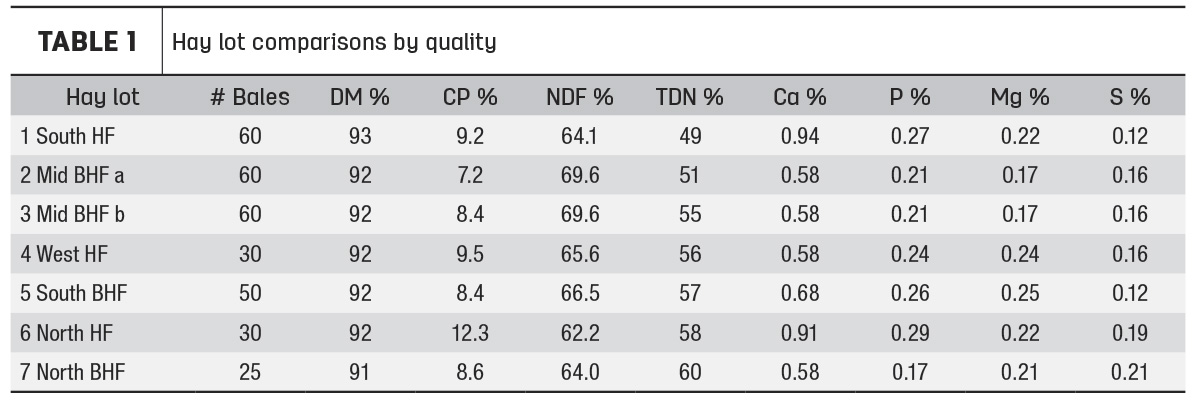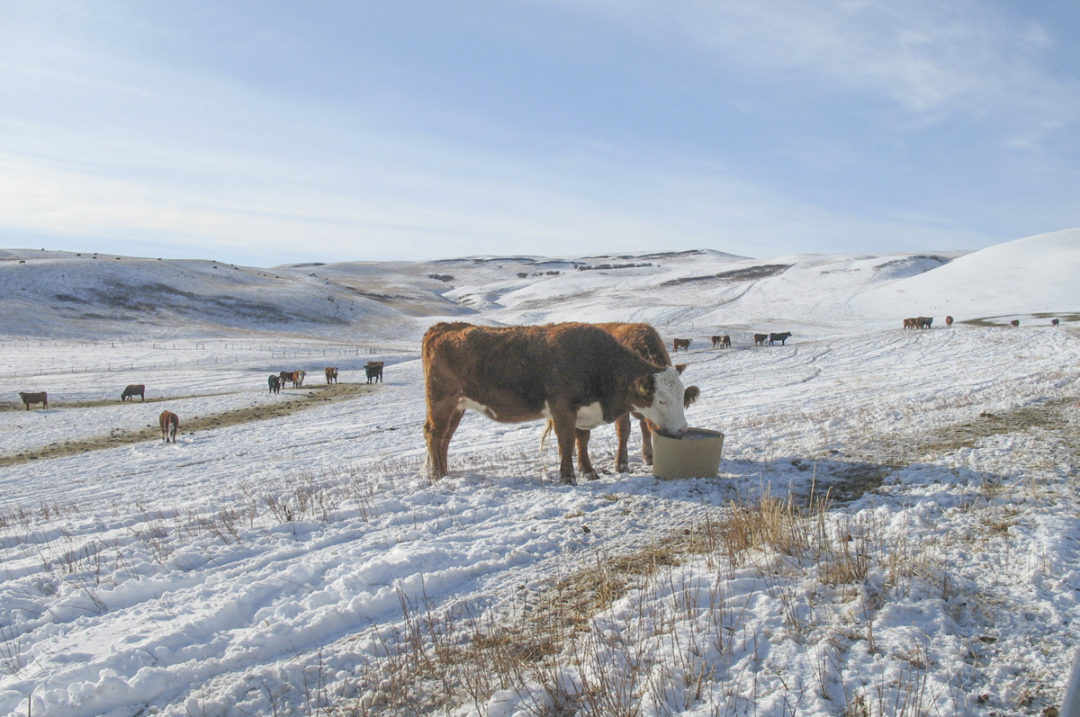In my opinion, one of the most underutilized tools in the cow-calf sector is testing your harvested forages. Having these forage samples is a critical component of putting together a cost-effective winter feeding strategy, which can account for up to 30% of a cattle operation’s yearly costs. While taking forage samples is something everyone talks about doing, many times the practice seems to fall between the cracks.
It is easy to make assumptions about how your hay or harvested forage will perform this year based on experience, particularly if you put it up yourself or have been buying from the same person for years. But as we all know, growing conditions were very different this season than years prior. Between exceptional droughts in parts of the country, flooding in others and record-high fertilizer prices, it is safe to say this year’s hay crop is very different nutritionally than it has been before.
With margins remaining slim in the cattle business, eliminating the guesswork out of the most expensive cost for cow-calf producers is more valuable now than ever. A $15 forage sample acts as a road map that points you in the right direction and to maximizing the value of your hay and your supplements.
The first step to getting the most out of a forage sample is to collect it properly. Outlined below are a few rules I follow when I take samples:
- Test in “lots,” which are described by the article “Sampling Feeds for Analyses” as being “harvested from the same field consisting of similar types of plants, cutting dates, maturity, variety, weed contamination, type of harvest equipment, curing methods and storage conditions.”
- In each hay lot, take samples from approximately 10% of the harvested forage to get an accurate average. It is best to test a few weeks prior to feeding the hay – not immediately after baling.
- When testing round bales or big squares, a hay probe should be used to core 12 to 18 inches into the side of the bale to get the most consistent samples. If a hay probe is not available or you are testing stacks, stockpiled forages, etc., samples can be taken by hand. Simply take two or three handfuls from as far within the bale or stack as possible. However, be careful not to strip the leaves off.
- Once you have taken an appropriate number of samples out of each lot, carefully mix the samples together in a bucket or other mixing container.
- Put the combined sample into a 1-gallon Ziploc bag and remove the air. I try to fill a 1-gallon bag at least halfway full.
- Label the bag with the lot ID and sample date.
- Work with your local county extension agent or feed dealer to find the best place to send your samples for testing and analysis.
Once you have had all of your hay lots sampled and tested, putting the results into a table similar to Table 1 will make it easy to identify the differences between the various lots.

Organizing the results also allows us to break our available forages into different levels of quality, which are determined by the criteria below.
-
Low-quality forage: Forages at or below 7% crude protein (CP), with a neutral detergent fiber (NDF) level at or above approximately 63%
-
Medium-quality forage: Forages between 7% and 11% CP, with an NDF level at or below approximately 63%
- High-quality forage: Forages that do not require any supplemental CP to meet the needs of late-gestation or lactating beef cows, typically above 11% CP
With these determinations in place, we can strategically feed certain hay lots to specific sets of cows and provide supplements that best match the forage quality of that hay lot. For example, with first-calf heifers or fall-calving cows at peak lactation, it may be best to utilize your highest-quality hay, as these cattle typically have the highest nutritional needs. On the other hand, it would make sense to feed the lowest-quality hay to mid-gestation spring-calving cows without a calf at their side, and to supplement that hay with a higher-protein supplement to improve microbial function and forage digestibility. Neither hay nor supplements come in a one-size-fits-all package.
Taking forage samples requires some extra time and effort, but the results provide useful information. Without testing your forage, you are guessing at the quality of your hay and, as a result, you are either overpaying for excess feed or aren’t providing your cows with the nutrition they need to perform – and both of these issues cut into your bottom line. By taking forage samples and by matching your hay to your cows and your supplements to your hay, you can plan for a winter feeding program that will maximize the profitability of your operation.









